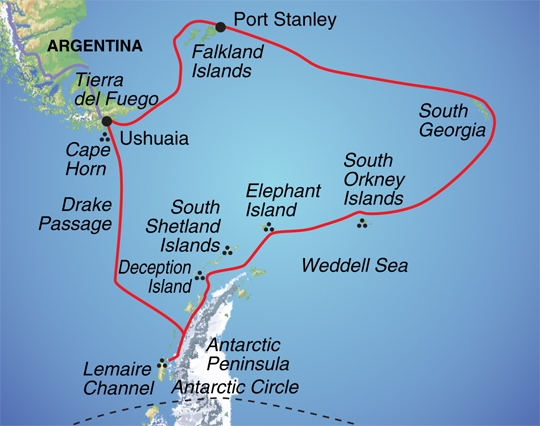Visiting Grytviken South Georgia (Page Seven)
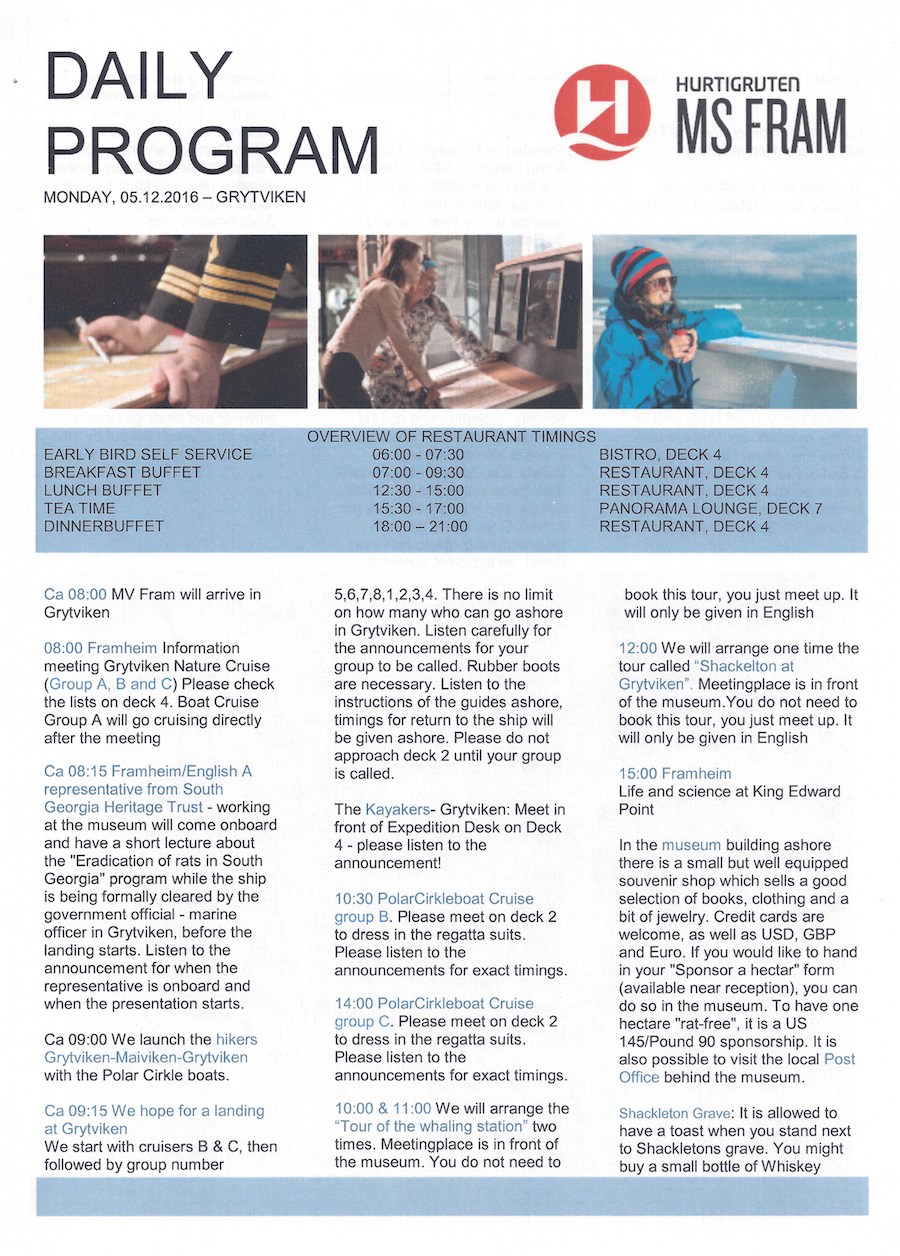
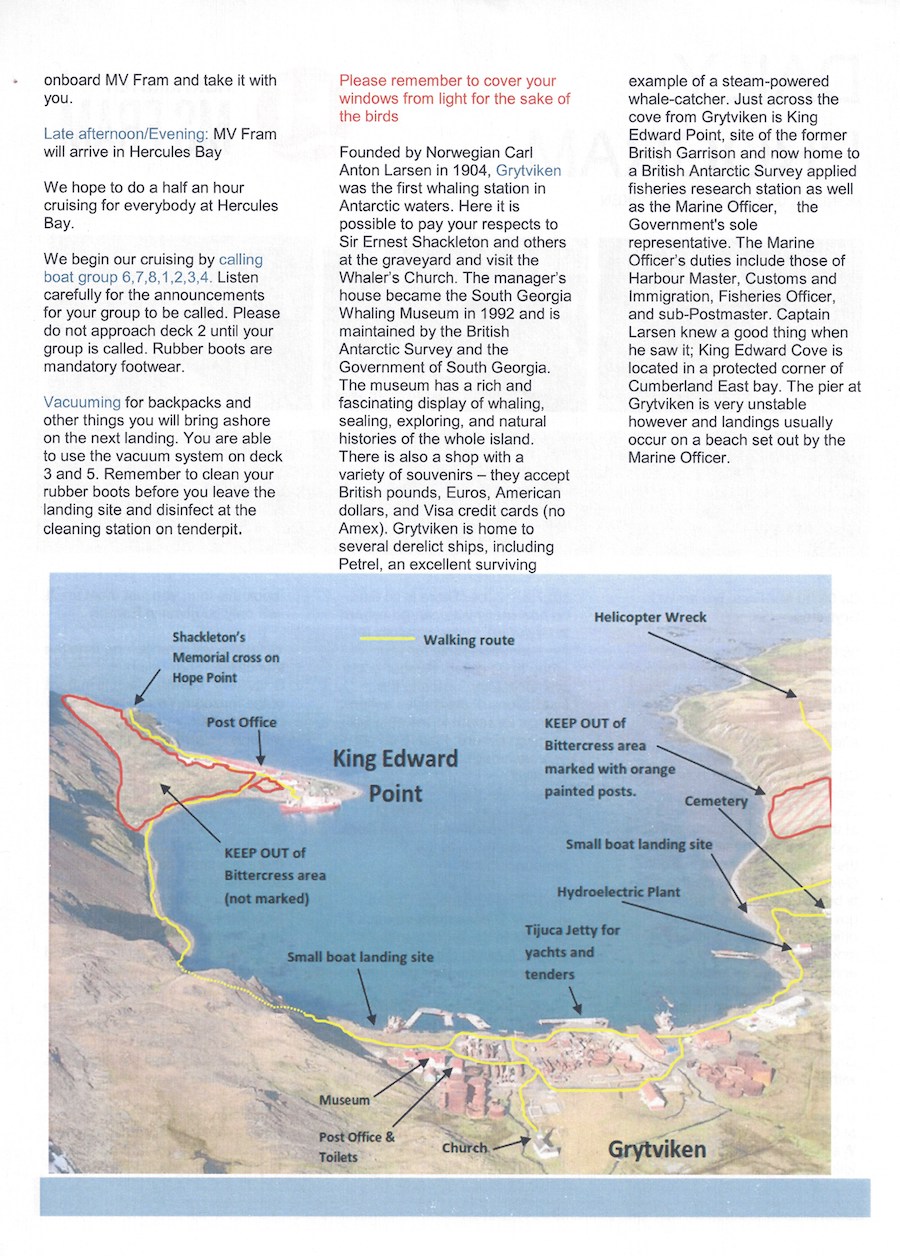

Did You Know? - Grytviken (Swedish for "the Pot Bay") is a settlement on the island of South Georgia, part of a British Overseas Territory in the South Atlantic. It was so named in 1902 by the Swedish surveyor Johan Gunnar Andersson who found old English try pots used to render seal oil at the site.
It is the best harbor on the island, consisting of a bay (King Edward Cove) within a bay (Cumberland East Bay). The site is quite sheltered, provides a substantial area of flat land suitable for building, and has a good supply of fresh water.
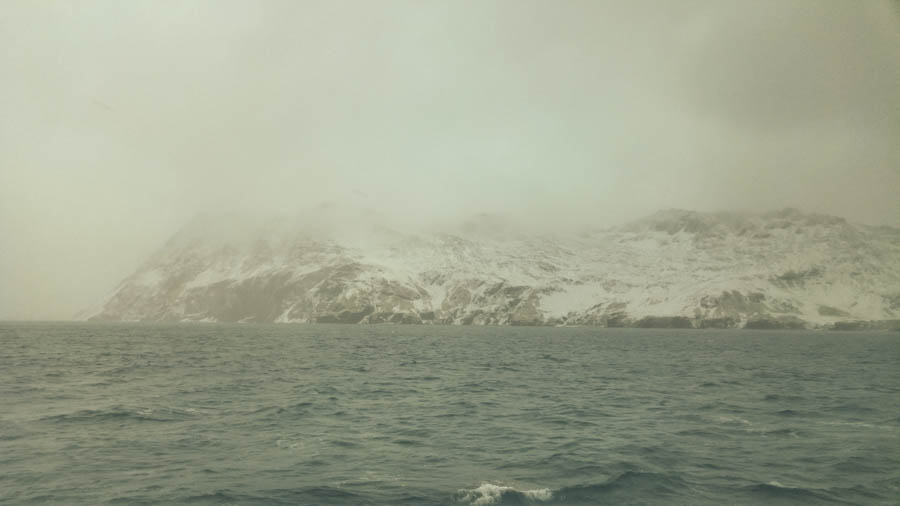
Seven in the morning and we got a surprise overnight!

Several inches of snow was all over the ship!

B-r-r-r-r-r-r
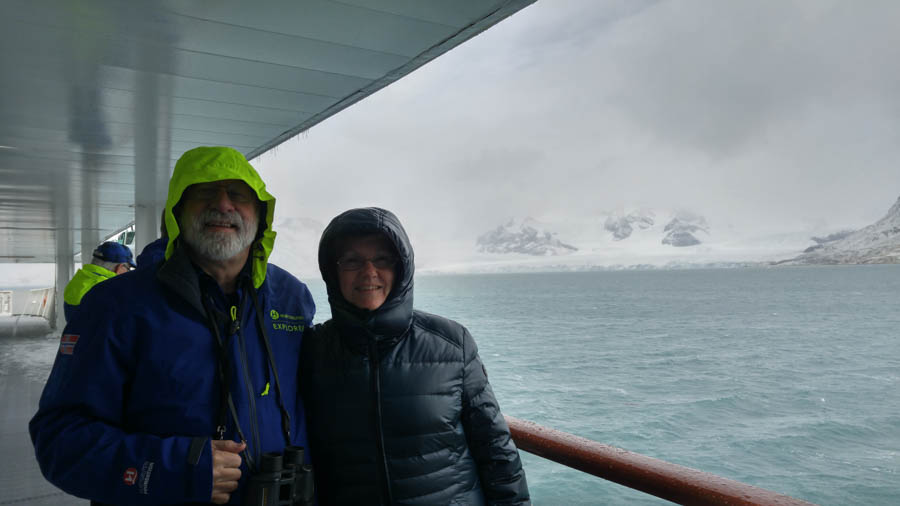
Trying to keep warm!
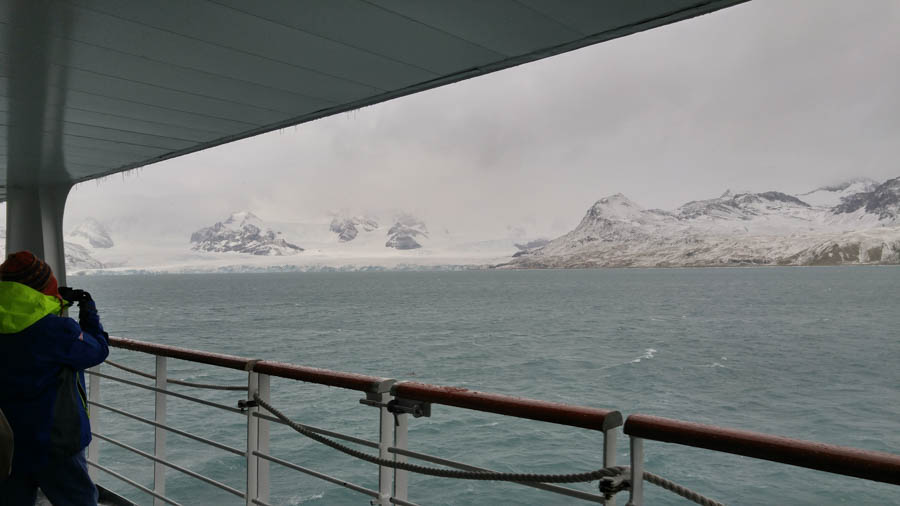
Time to go back inside!

The "town" is directly ahead!
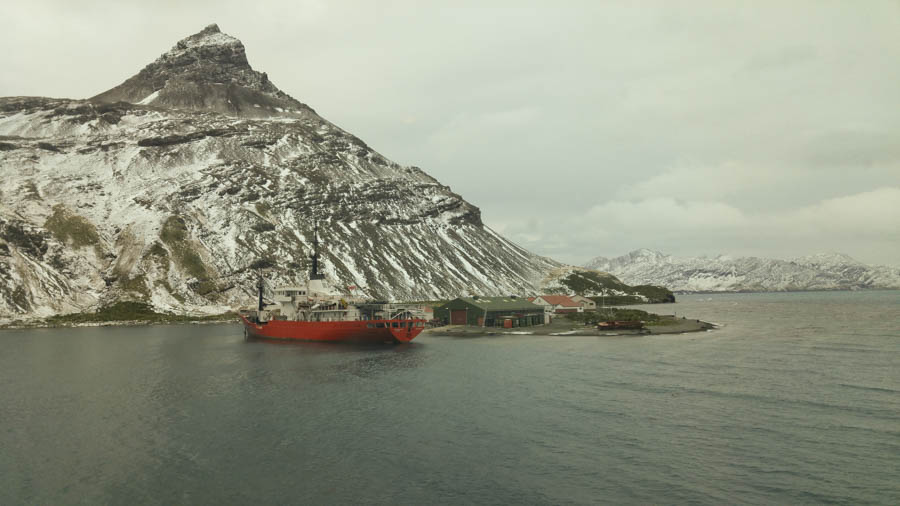
Right up to the dock... Except we are too big
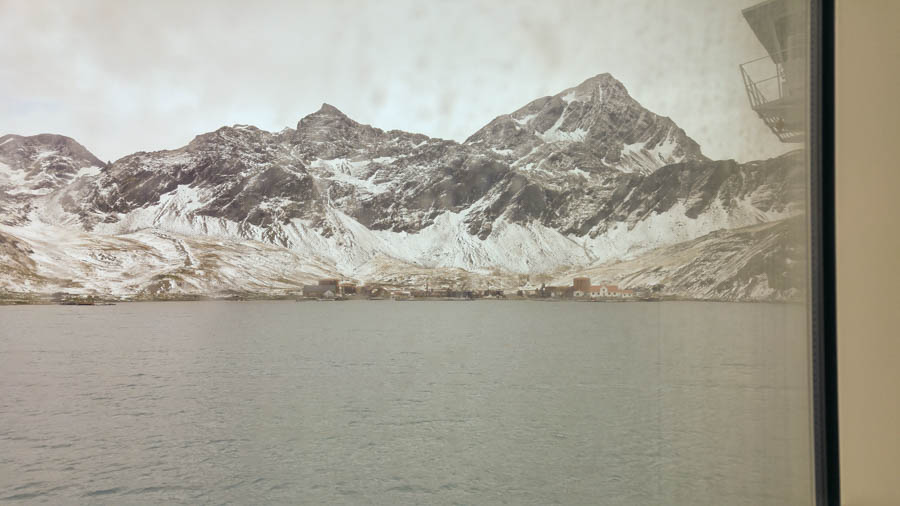
A view through the cabin window


Our boat was too big to unload at the dock
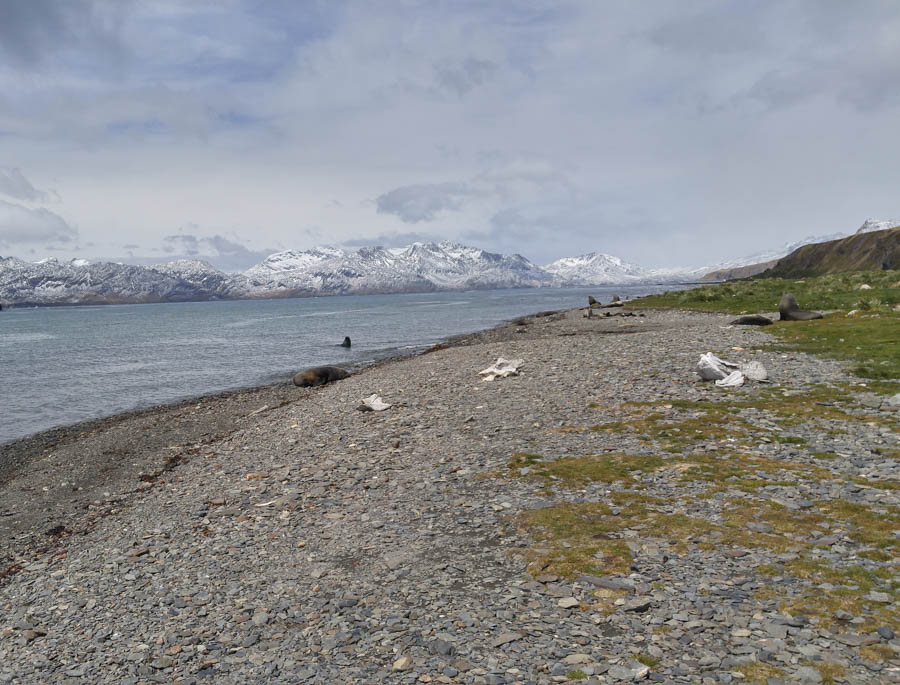
Unlimited rock supply!

We are walking toward the town
Did You Know? - The settlement at Grytviken was established on 16 November 1904 by the Norwegian sea captain Carl Anton Larsen, as a whaling station for his Compañía Argentina de Pesca (Argentine Fishing Company).
It was phenomenally successful, with 195 whales taken in the first season alone. The whalers used every part of the animals – the blubber, meat, bones and viscera were rendered to extract the oil, and the bones and meat were turned into fertilizer and fodder. Elephant seals were also hunted for their blubber.
Around 300 men worked at the station during its heyday, operating during the southern summer from October to March. A few remained over the winter to maintain the boats and factory. Every few months a transport ship would bring essential supplies to the station and take away the oil and other produce. The following year the Argentine Government established a meteorological station.
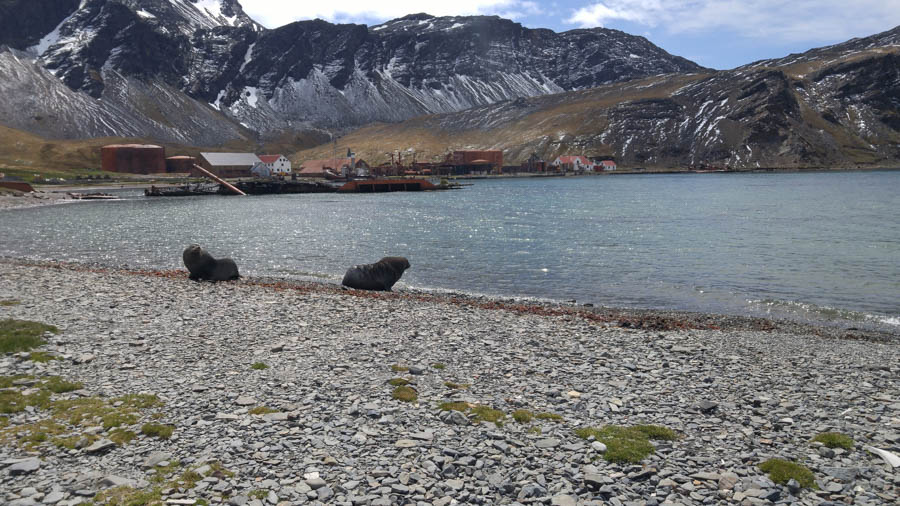
The seals come right into town
 Sleeping in the grass
Sleeping in the grass
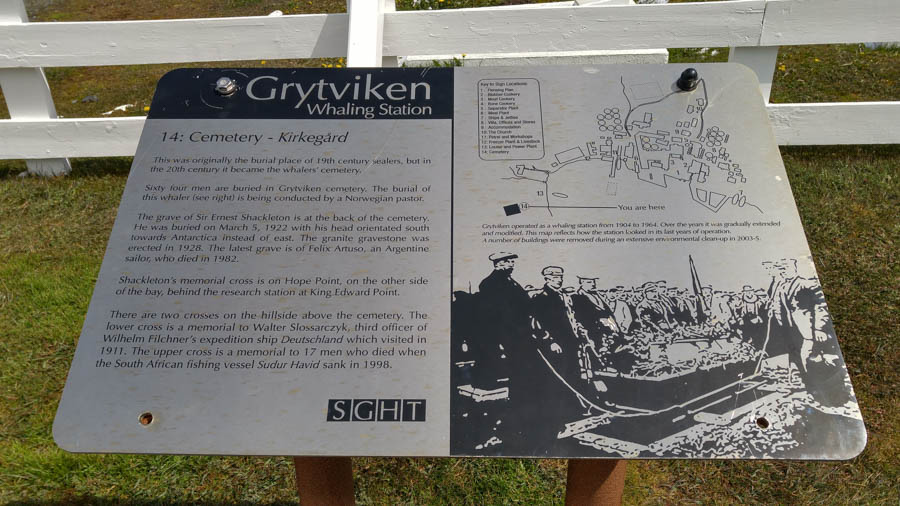 Not very large as few people have ever lived here
Not very large as few people have ever lived here
Did You Know? - The Grytviken Cemetery, associated with the church, is located about 700 meters (2,300 ft) away to the south. It predates the church, first accepting whalers' graves before 1902. It holds 64 graves, including nine victims of a 1912 typhoid epidemic, Ernest Shackleton (1874-1922), the ashes of fellow polar explorer Frank Wild (1873-1939) which were interred in 2011, and Félix Artuso, an Argentinian submarine officer who was killed in the 1982 British recapture of South Georgia from Argentina.

Interesting to see the various markers dating back 100+ years

Almost 100 years
Did You Know? - Sir Ernest Henry Shackleton CVO OBE FRGS (/ˈʃækəltən/; 15 February 1874 – 5 January 1922) was a polar explorer who led three British expeditions to the Antarctic, and one of the principal figures of the period known as the Heroic Age of Antarctic Exploration. Born in Kilkea, Athy, County Kildare, Ireland, Shackleton and his Anglo-Irish family moved to Sydenham in suburban south London when he was ten. His first experience of the polar regions was as third officer on Captain Robert Falcon Scott's Discovery Expedition 1901–1904, from which he was sent home early on health grounds, after he and his companions Scott and Edward Adrian Wilson set a new southern record by marching to latitude 82°S.
During the second expedition 1907–1909 he and three companions established a new record Farthest South latitude at 88°S, only 97 geographical miles (112 statute miles, 180 km) from the South Pole, the largest advance to the pole in exploration history. Also, members of his team climbed Mount Erebus, the most active Antarctic volcano. For these achievements, Shackleton was knighted by King Edward VII on his return home.
Shackleton was buried in Grytviken because his wife said he'd rather be there than anywhere else
.jpg)
1922
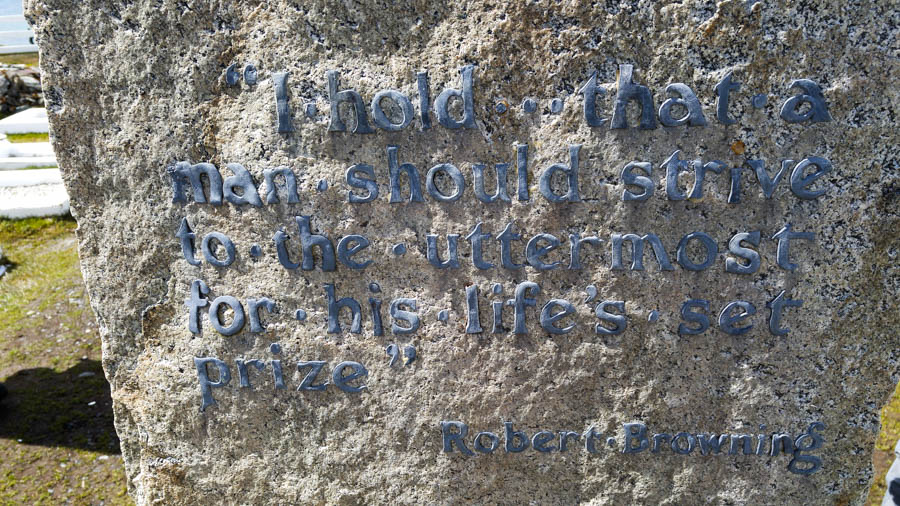
"I hold that a man should strive to the uttermost
for his life's set prize"
- Robert Browning
(This is on the back of Shackleton's grave stone)
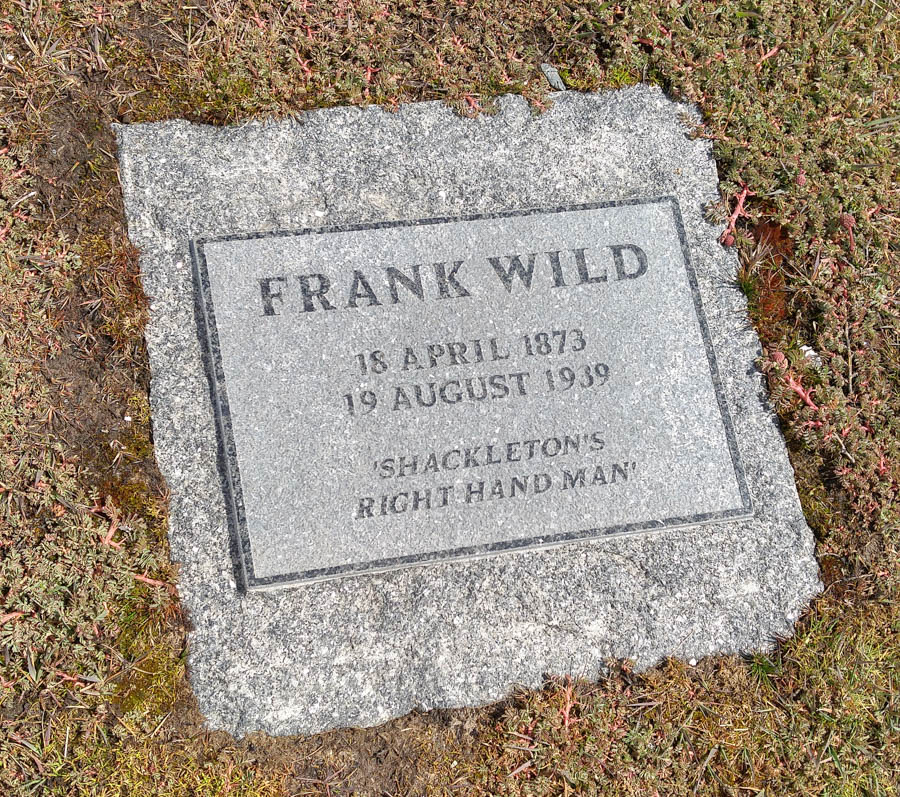
Frank Wild was buried to the right of Shackleton
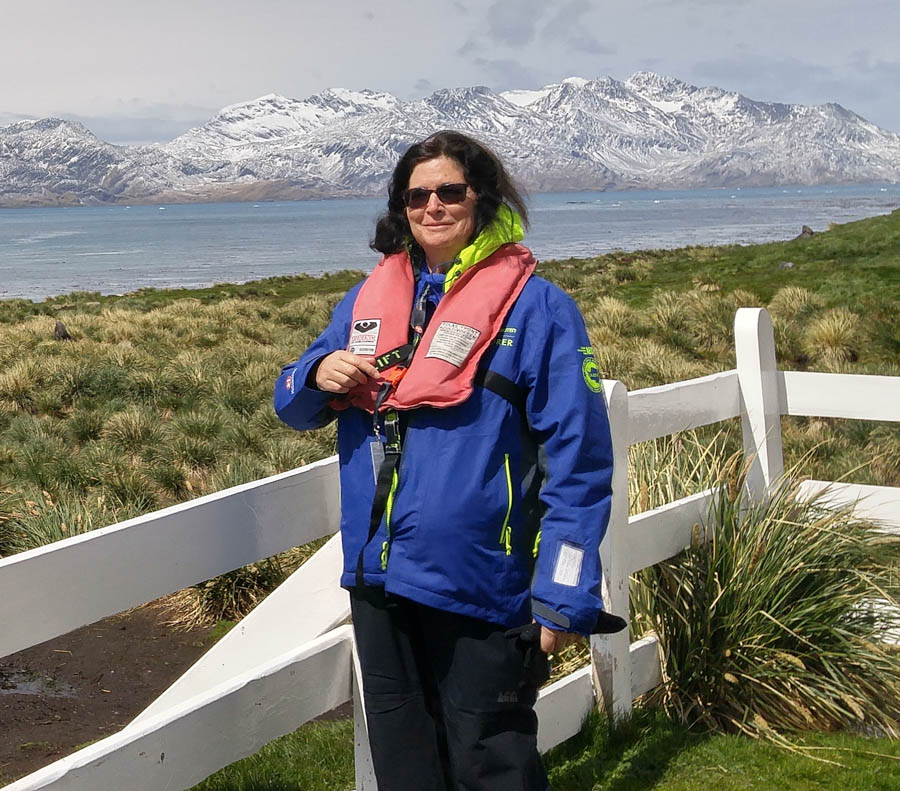
Adjusting the temperature
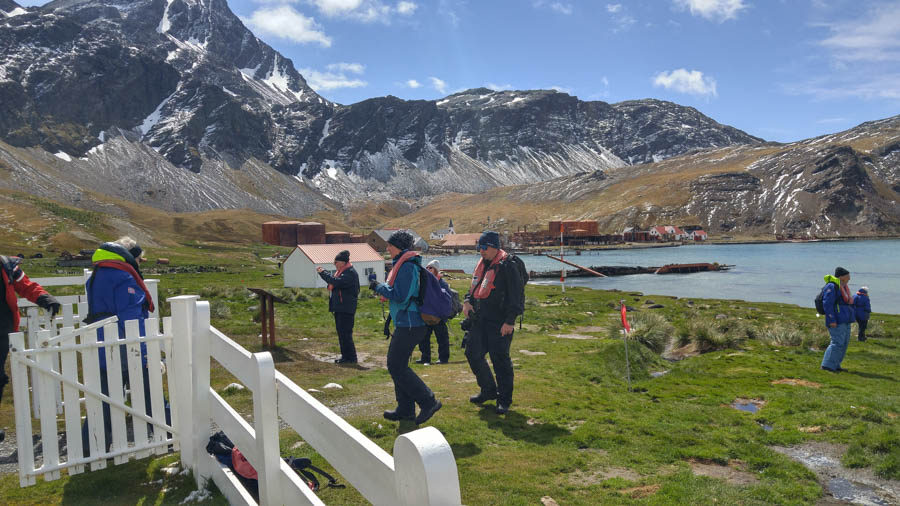
The cemetery is just outside of "town"
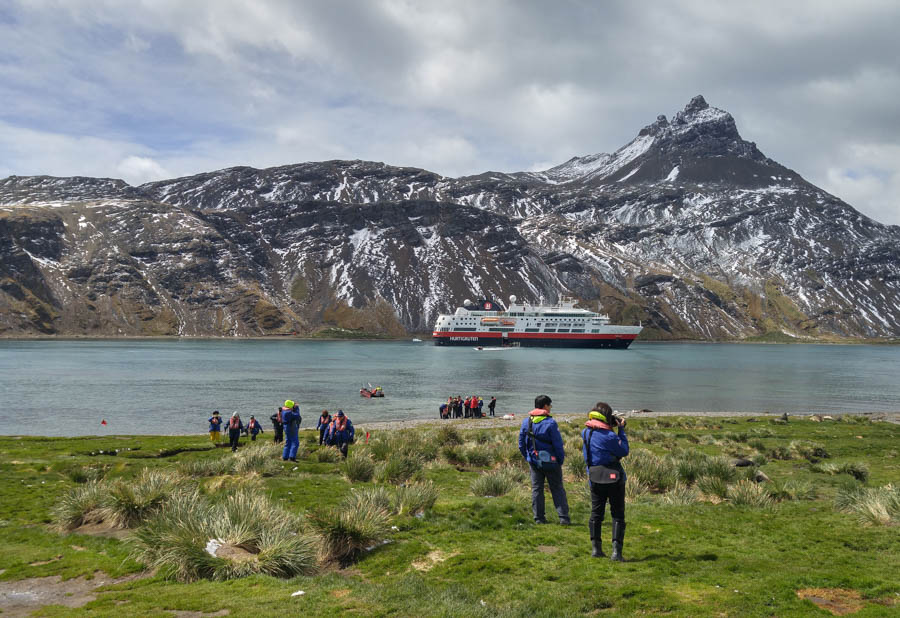
Our ship sets anchor and awaits us later this afternoon
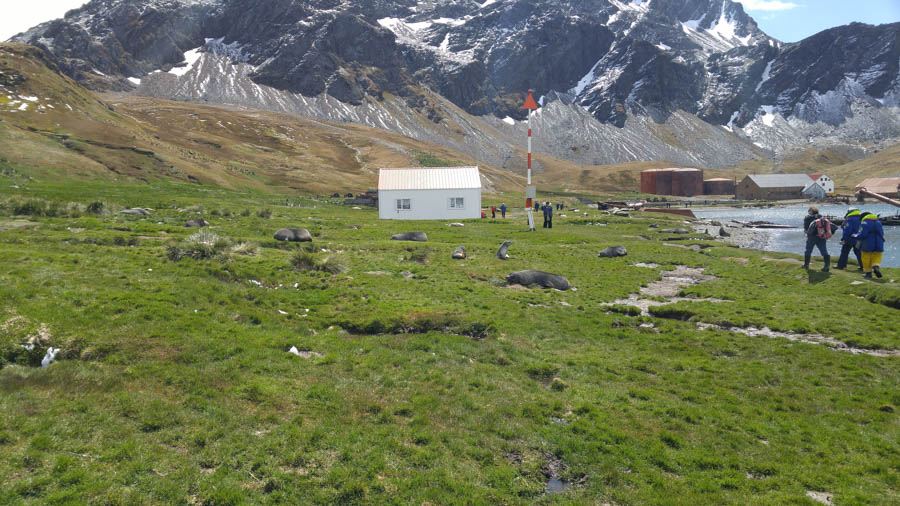
Time to walk into town
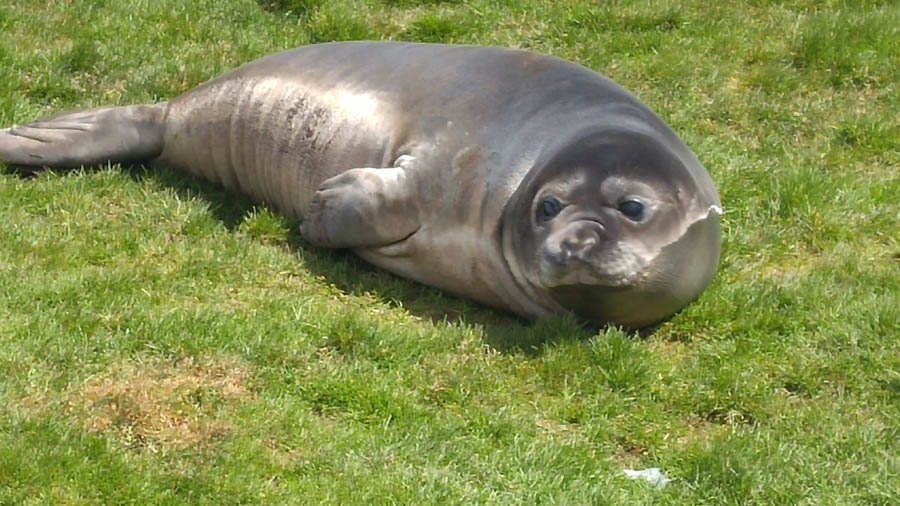
The town greeter awaits us...
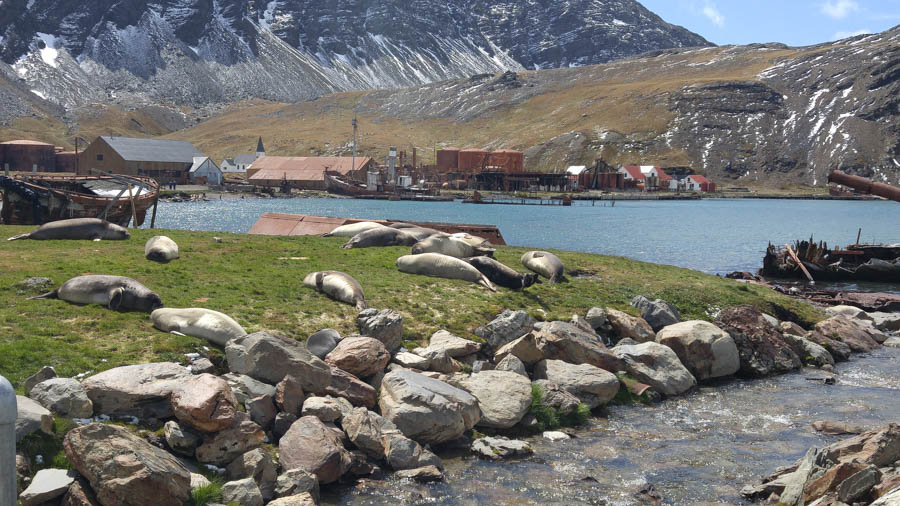
There are MANY greeters on our way to town


Lazy bones!

We are almost there!
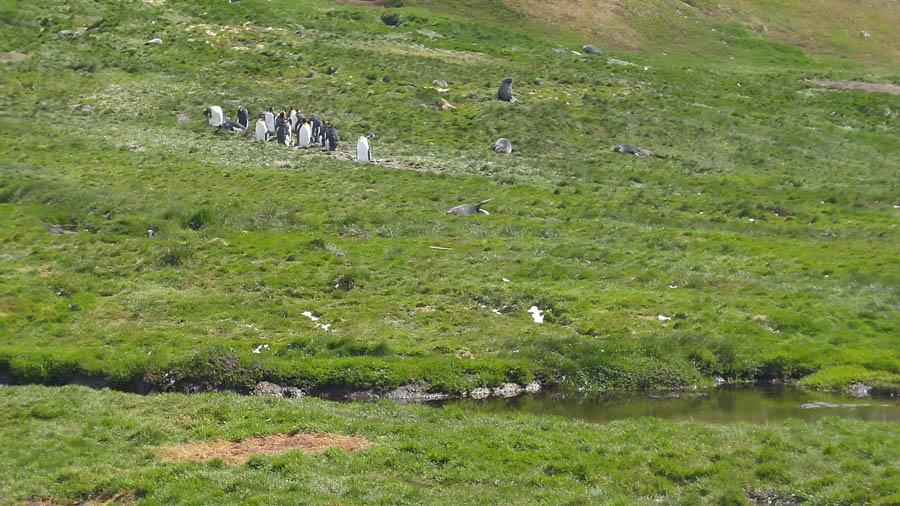
The penguins are also taking a walk!

Snoring up a storm
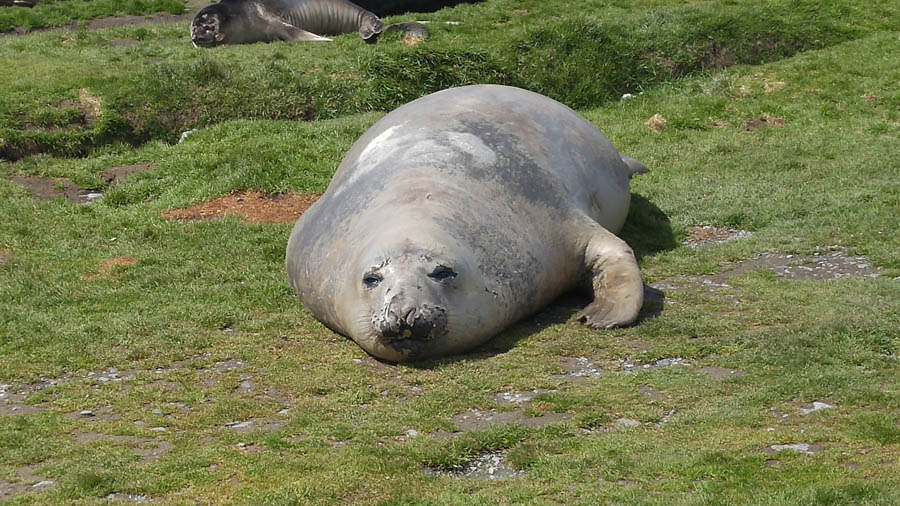
Looks like he has a flat!
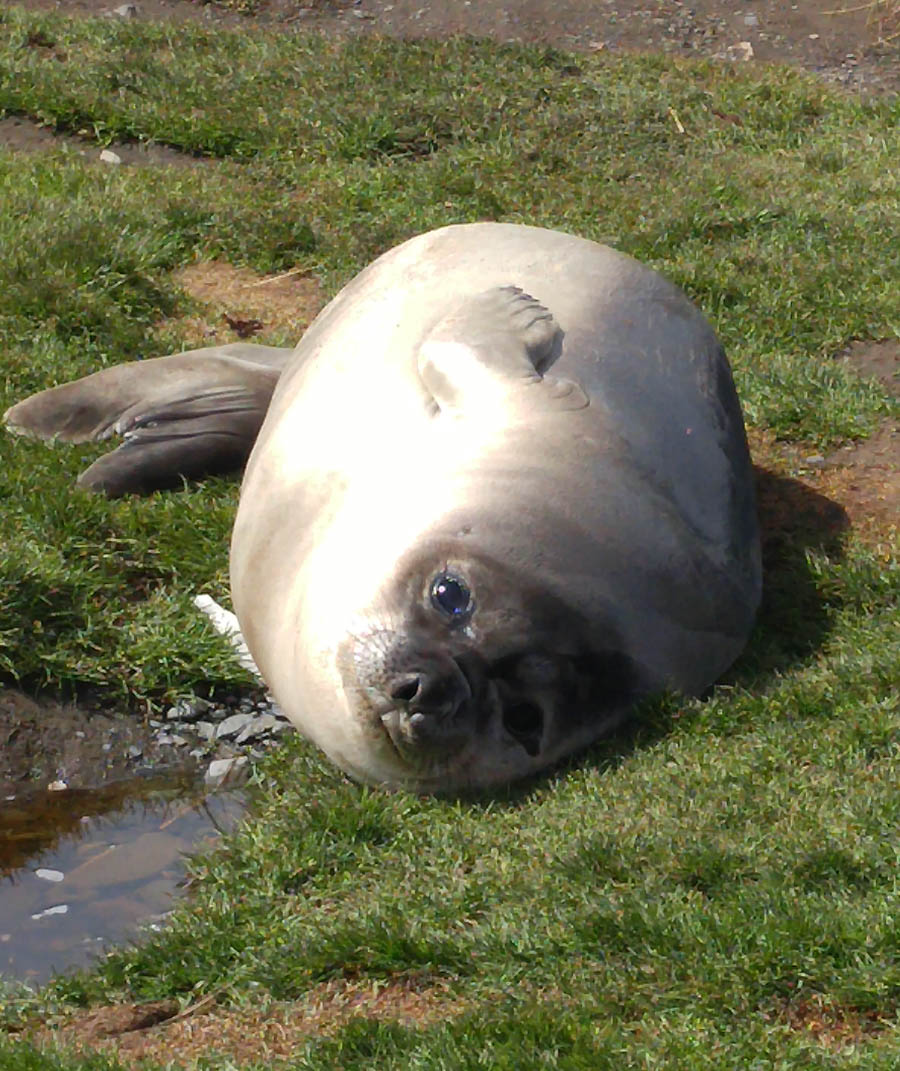
I am too cute!
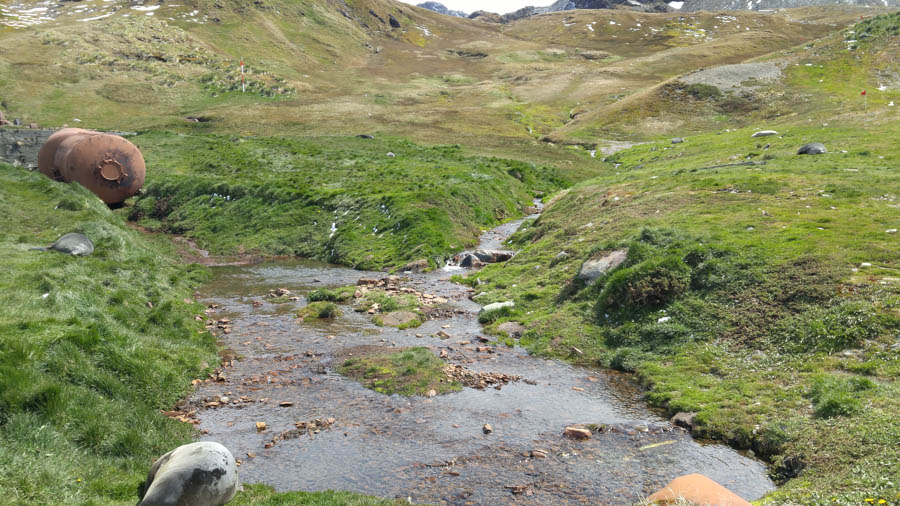
The flow of water never stops!

Another 500 feet and we will be there... Where?

"Do you have any fresh fish?"
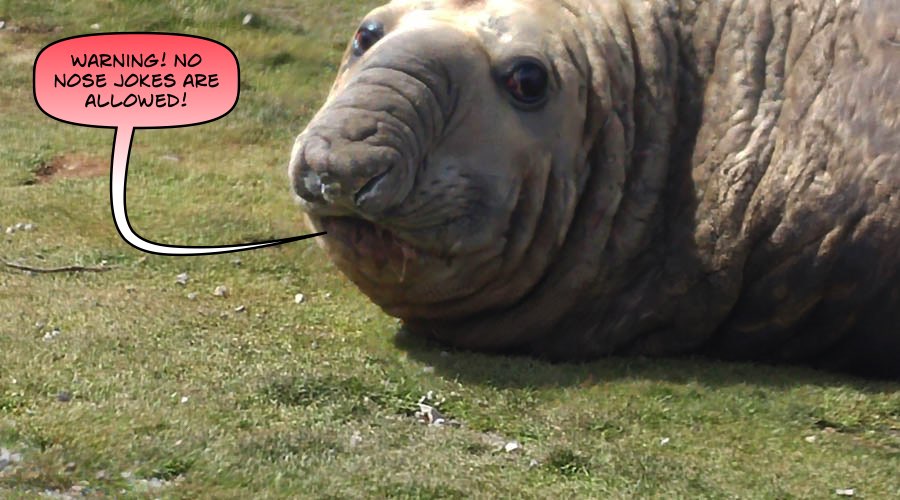
In this picture you can see why they are called elephant seals

They just lay there and watch us...
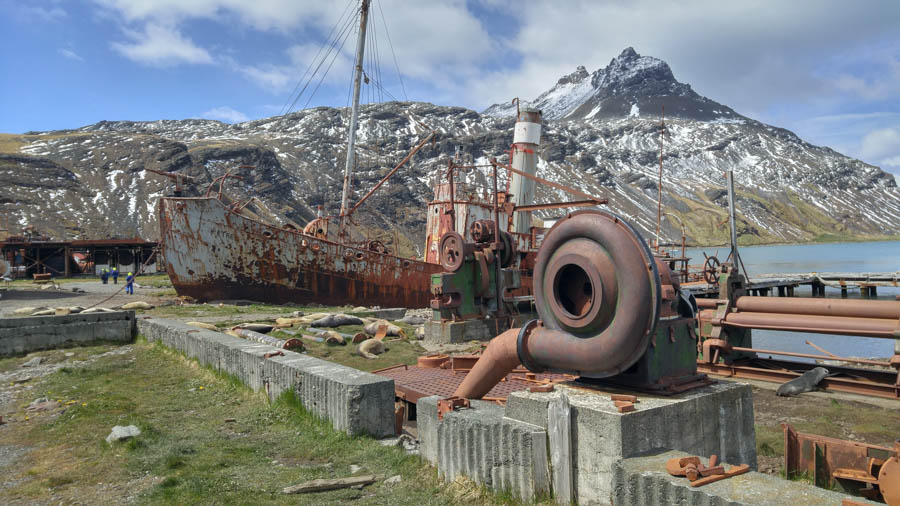
All sorts of mechanical devices rusting away

The building had a relatively new roof
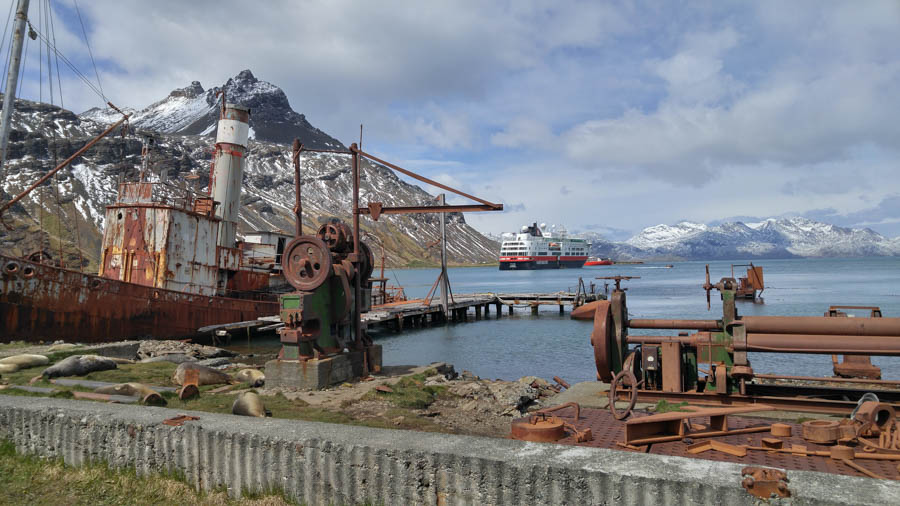
Beautiful in a strange sort of way
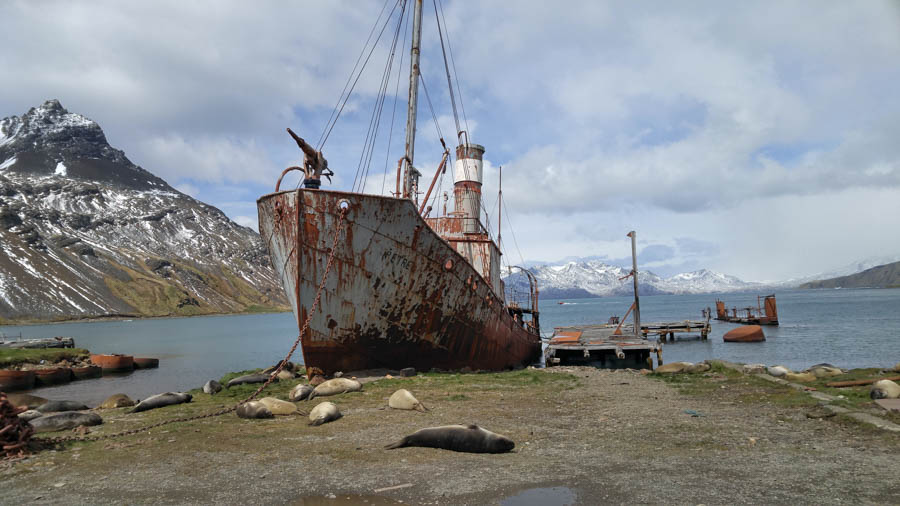
The proverbial "Rust Bucket" - An ancient car or ship, covered in rust. May also be an affectionate term for a merely old ship.

Flensing is the removing of the blubber or outer integument of whales. English whalemen called it flenching, while American whalemen called it cutting-in.
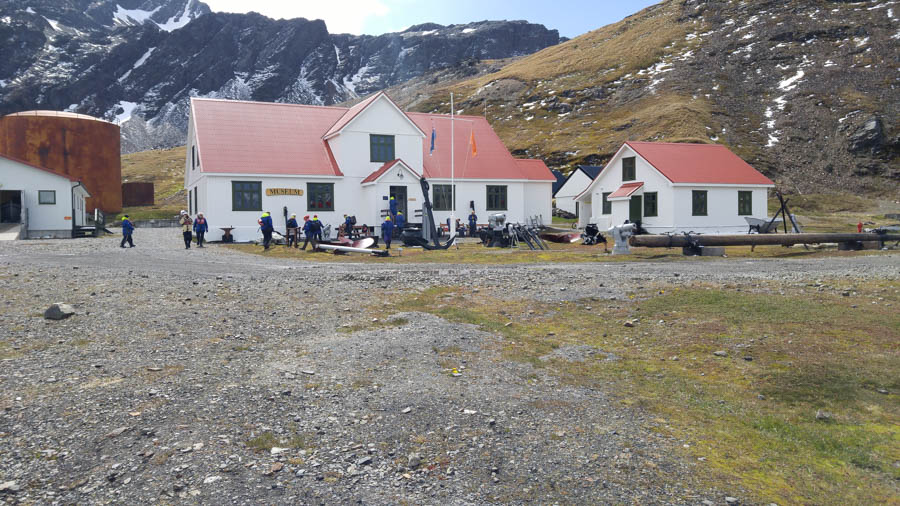
The South Georgia Museum
Did You Know? - The South Georgia Museum is located in the villa at Grytviken that formerly acted as the whaling station manager's house. The museum was established by Nigel Bonner in 1991 as a whaling museum. Its scope now embraces all the main areas of island's history, including most aspects of South Georgia's human heritage and natural history.
Exhibits include discovery, exploration, Shackleton, surveying and mountaineering expeditions, sealing in the late 18th and early 19th centuries, the early days of whaling, techniques of modern whaling in the middle part of the 20th century, whalers' social life, maritime history, and natural history. Displays also cover the 1982 conflict and subsequent British military presence until 2001.

There are many rooms to visit...
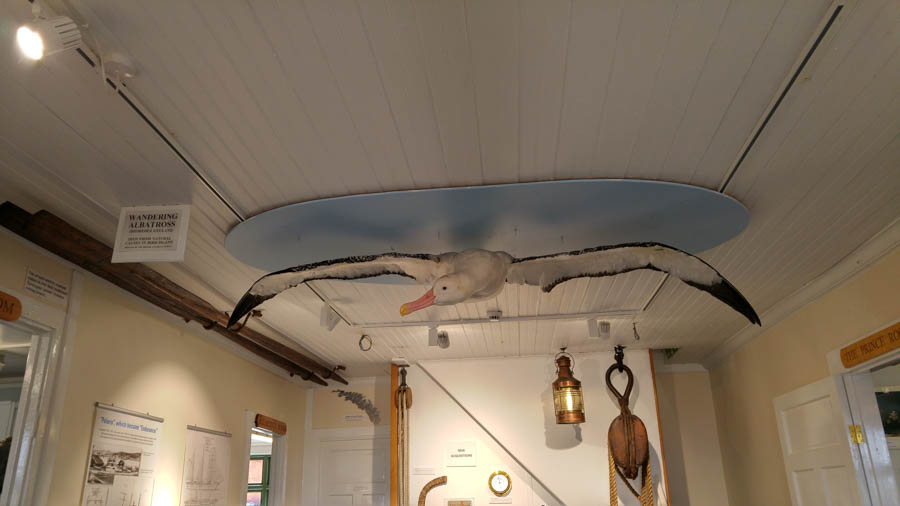
Inside the Bonner Room (Click to see the full sized image)
Did You Know? - Nigel Bonner, former Deputy Director of the British Antarctic Survey, established South Georgia Whaling Museum in 1992. His contribution is remembered in this room, which houses displays on the South Georgia Heritage Trust, the history of the building and the museum, and the discovery of the island. On one wall a large map of South Georgia also shows views from several places round the island and marks out the route that Shackleton took in 1916 when he sought rescue for his men.
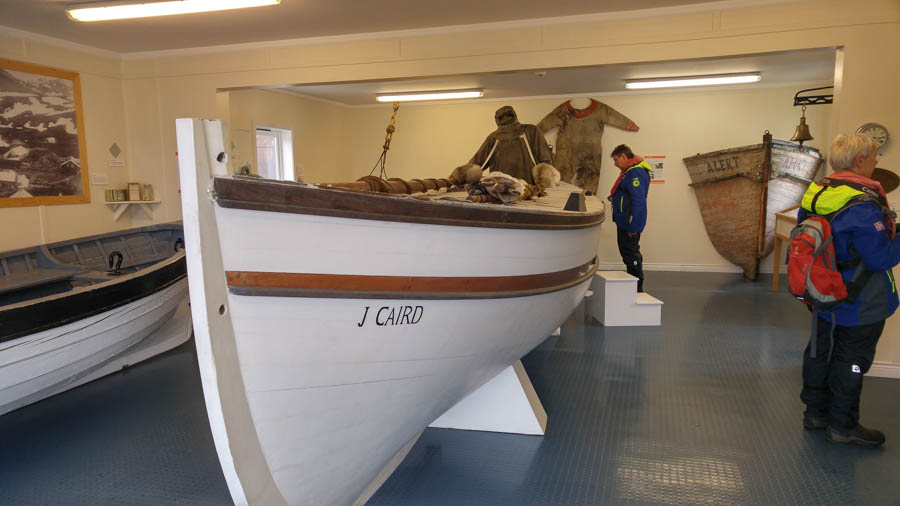
The museum has many nice exhibits
Did You Know? - This boat is an exact replica of the boat that Shackleton and some men took from Elephant Island to Fortuna to seek help to rescue his men stranded on Elephant Island. There was a documentary made to replicate this voyage, since it was so unbelievable. They said it was next to impossible with the navigation aids that Shackleton had that he could have found South Georgia - because if he missed they would've been lost at sea forever. In fact not everyone doing the documentary were able to make it and had to be rescued from the little boat and they were being monitored all the time. It was an amazing documentary of an amazing true life event.
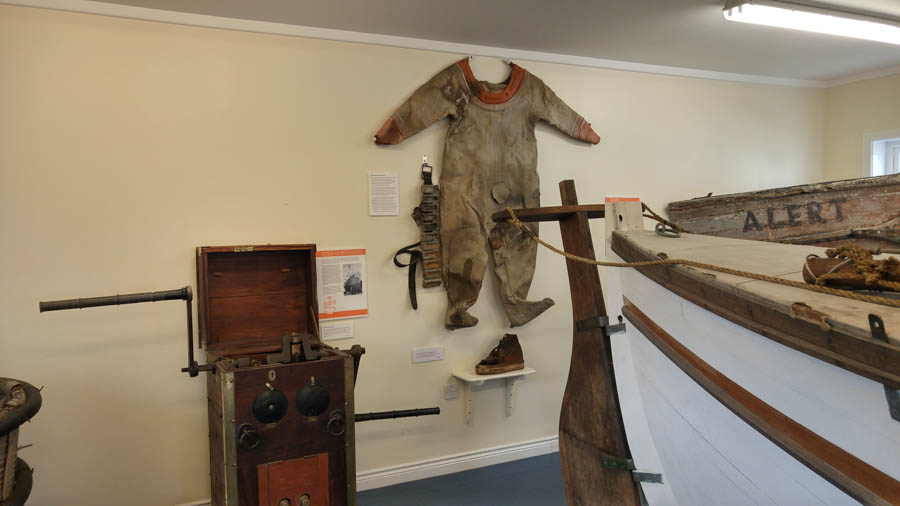
Can you imagine diving in these waters?

Mr. Albatross... Found wherever you go


Looks like some weather is coming in so we scooted right along!
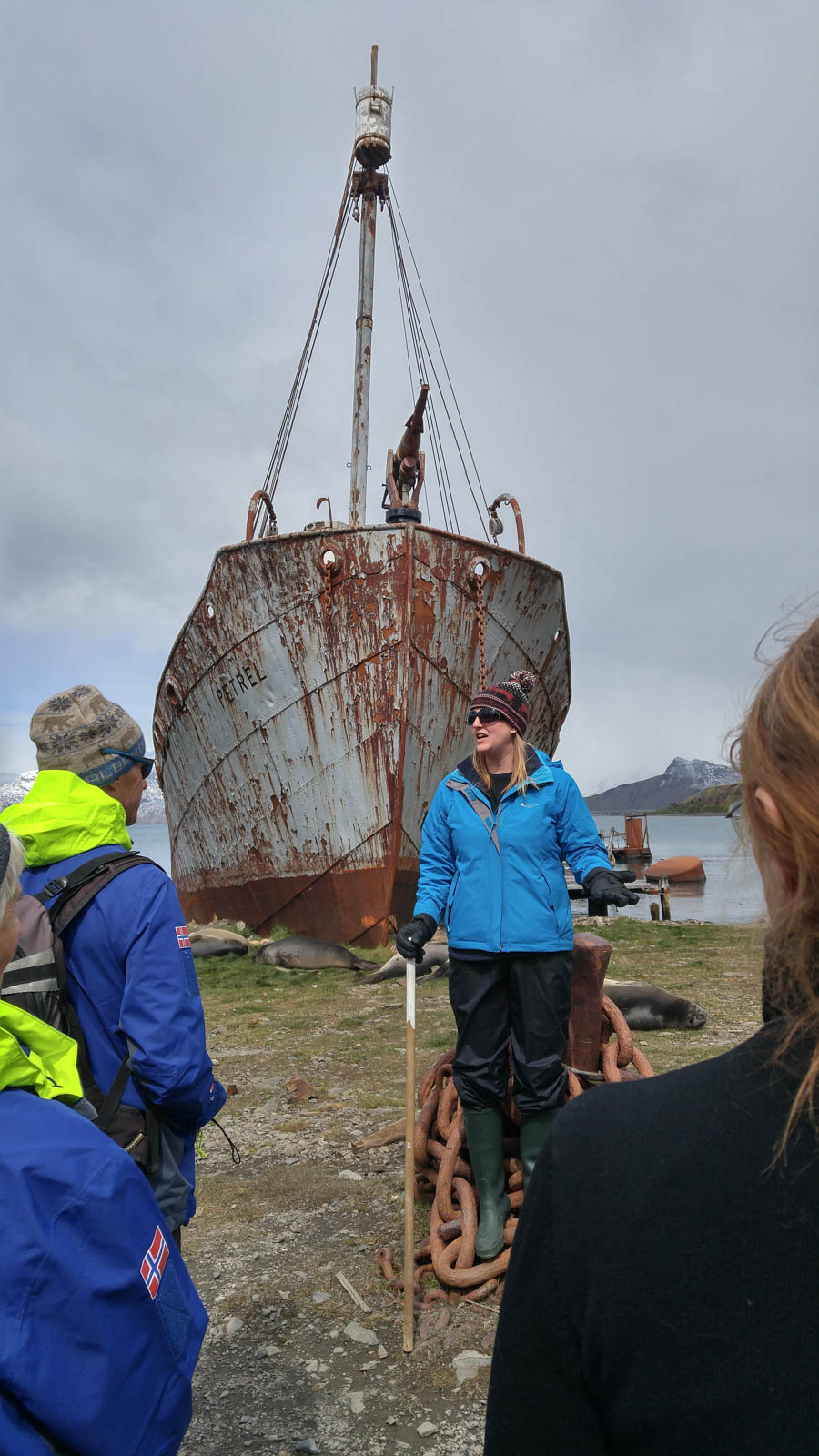
Our guide was quite knowledgeable

The church has been there for nearly 100 years!
Did You Know? - Norwegian Lutheran Church, also known as the Whalers Church and as Grytviken Church, in Grytviken, South Georgia, was built in 1913 and was part of the Church of Norway.
The church had a cameo appearance in the 2006 animated film Happy Feet.
The Neo-Gothic church was pre-built in Norway and erected in Grytviken by whalers led by Carl Anton Larsen around 1912-1913 and consecrated on Christmas Day 1913.
The church consists of a single nave leading to a small altar. A small library is attached to the side near the altar. Inside, worshippers (and now visitors) are seated on long wood benches. The floor's dark wood planks contrast with the white walls and celling. A second floor is accessible from a staircase at the front entrance. From the second floor, visitors can view the nave or look outside.
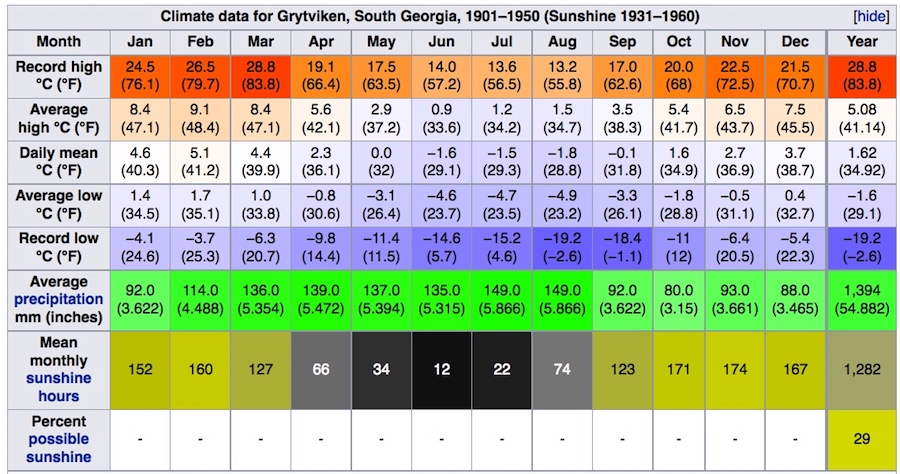

Restored to its original condition
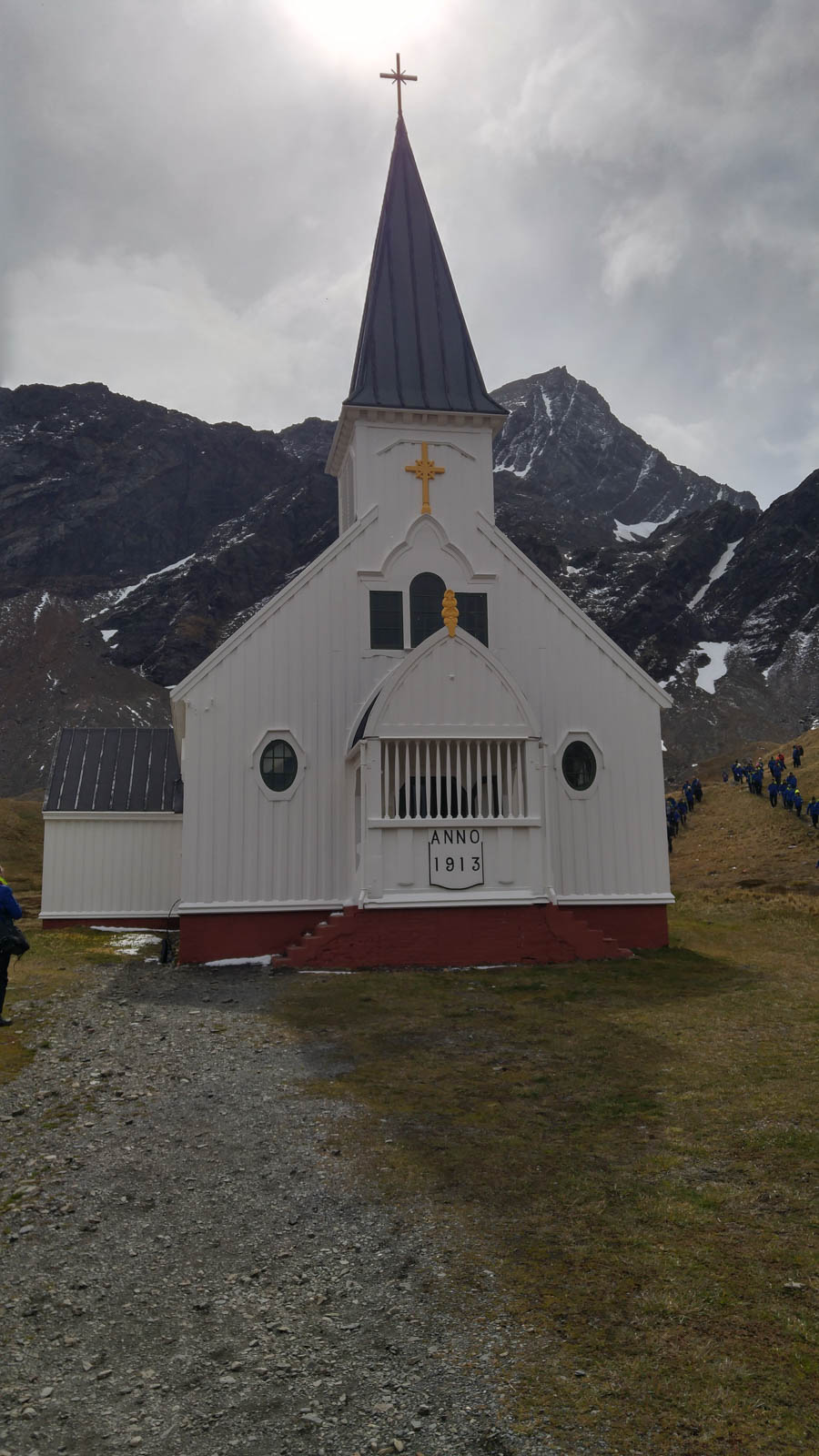
Did You Know? - In April, 1982, during the invasion of South Georgia by Argentinian military forces, members of a British Antarctic Survey team were invited by British marines to take shelter in the church.
After years of abandonment and weathering the harsh elements of the region (roof damaged in 1994), the church has been renovated by the keepers of South Georgia Museum and volunteers in 1996 – 1998 and now serves for occasional church services and marriage ceremonies.
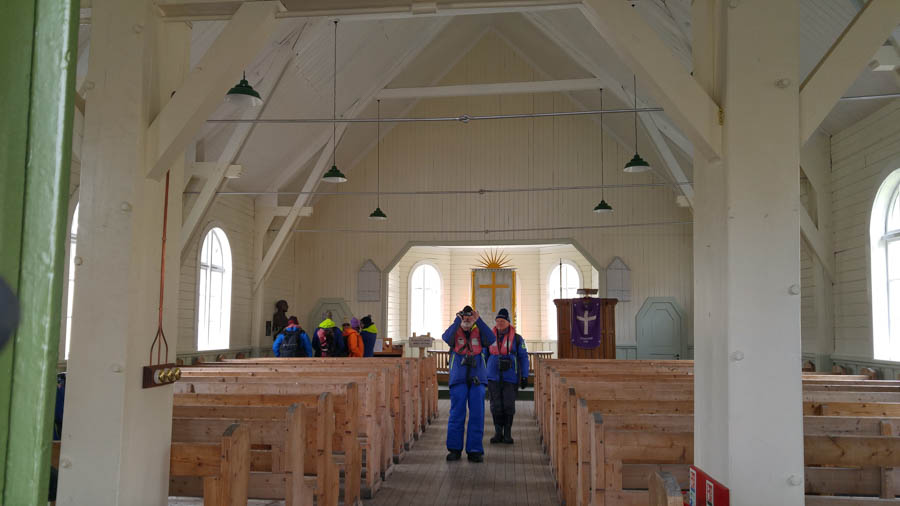
Larger than it looks

OK, who is pulling the bell ropes?

The guilty party was found...
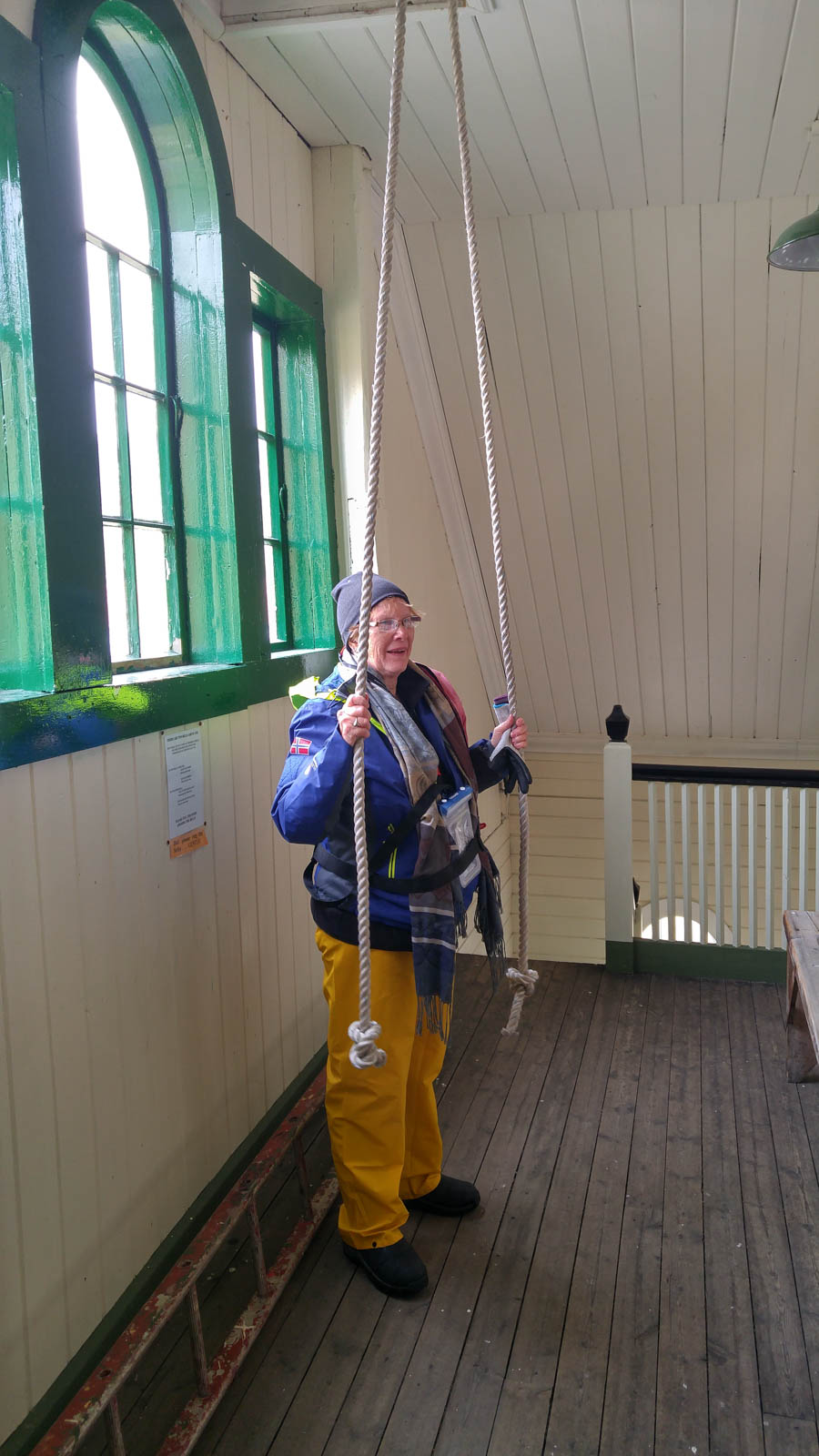
I had to do it... Just once!
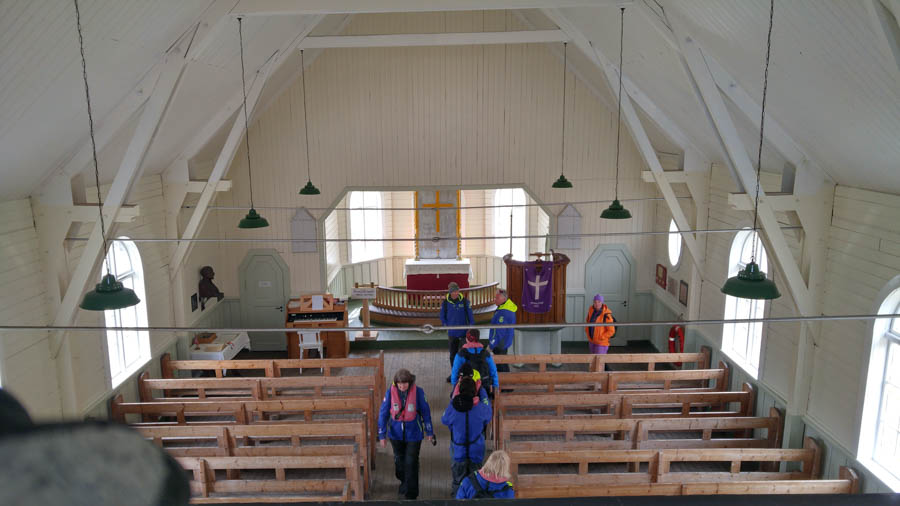
View from upstairs
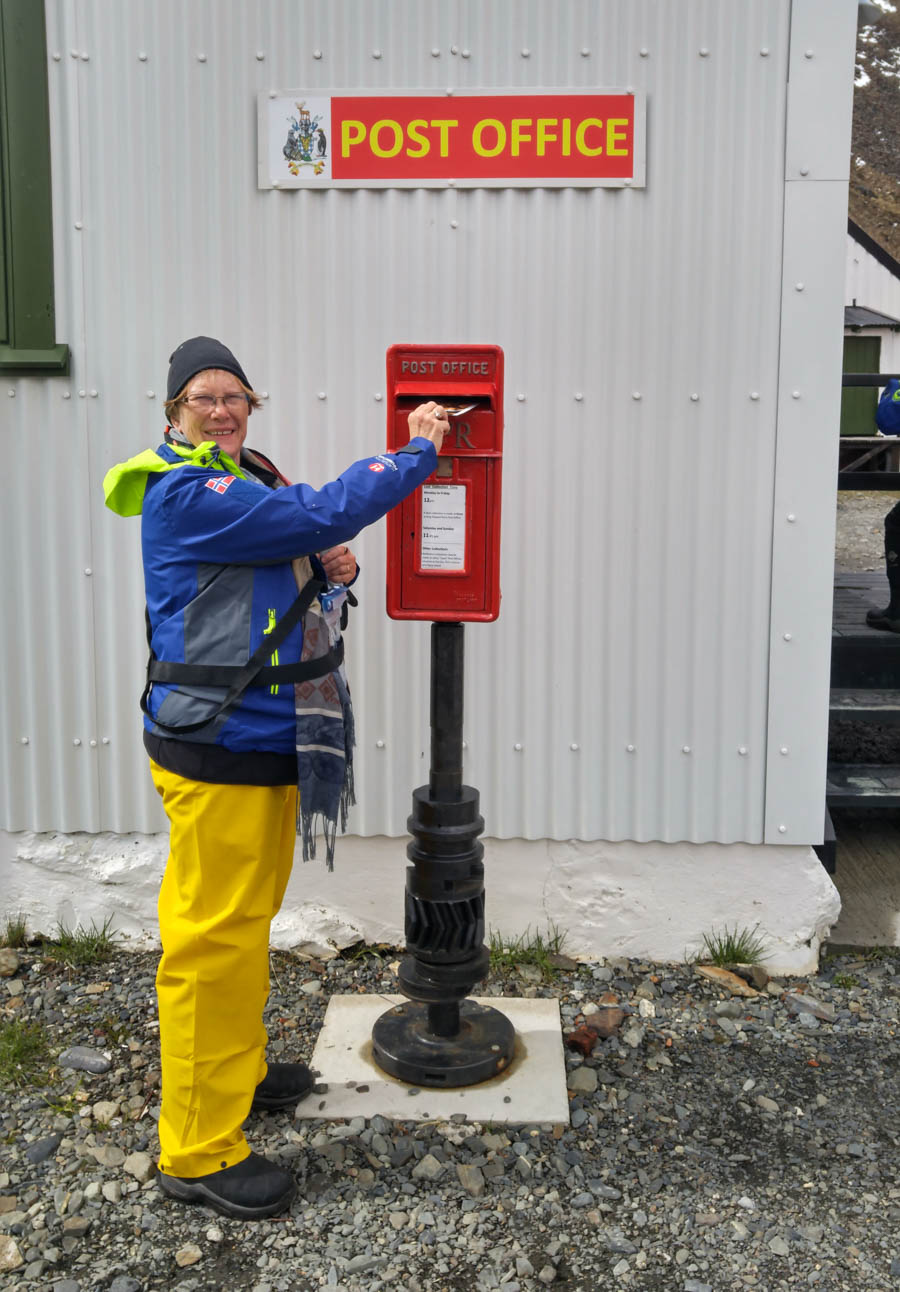
All the amenities of home!
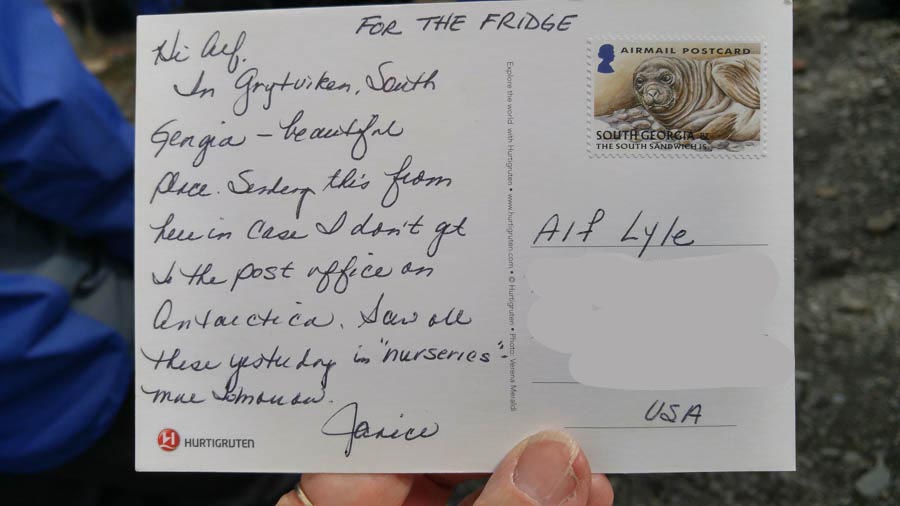
For the fridge or put in the fridge! - Notice the South Georgia stamp of a seal. And I didn't make it to the post office at Port Lockroy, Antarctica because it was iced in!


Bones bones, Dem bones

Some of our group are already getting on board
(Look at the starboard side of the ship at the water line)
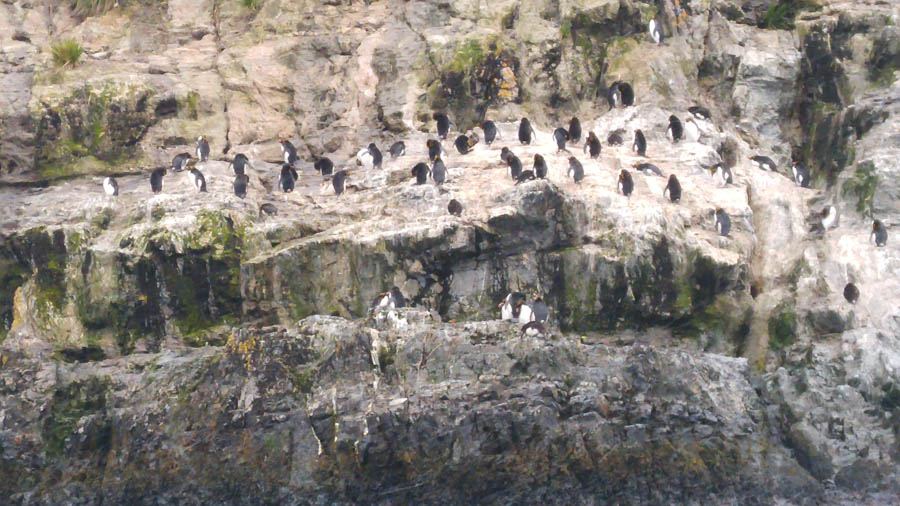
Hang on guys! It's a long way down!
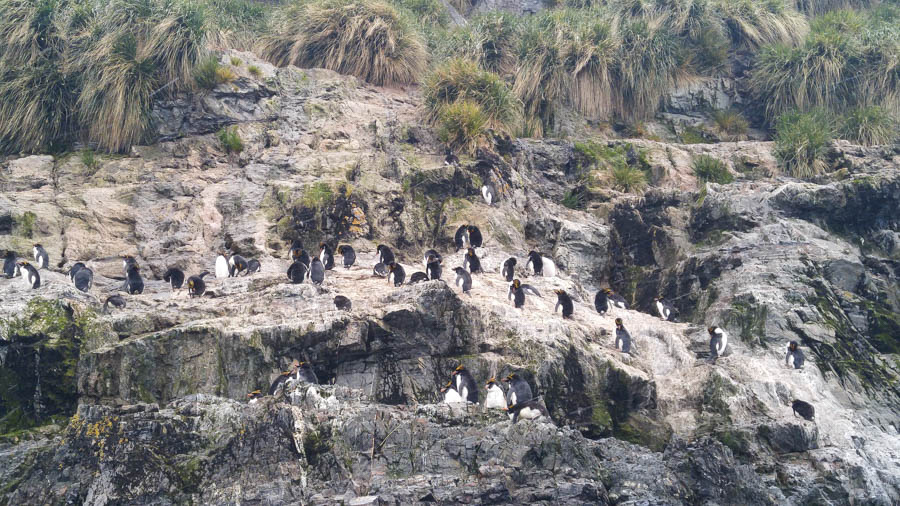
They are fearless

On our launch returning to the ship
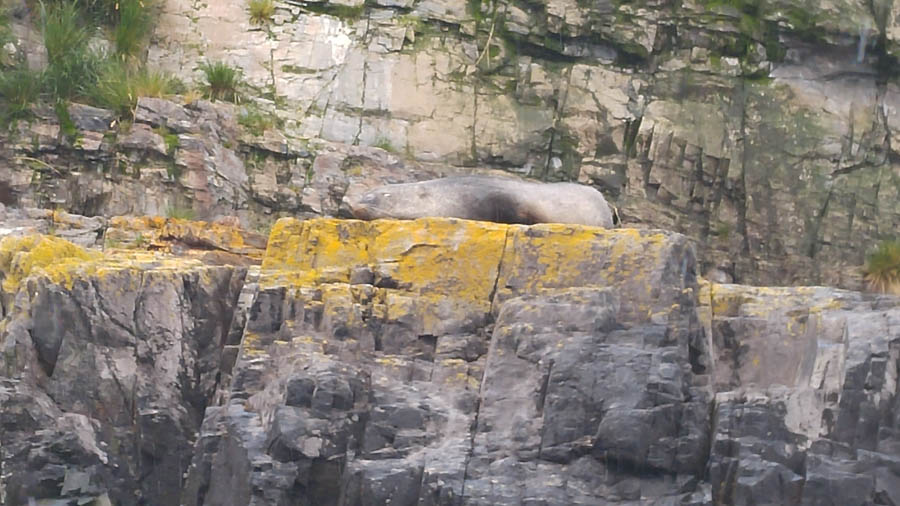
How in the world did he get up there?
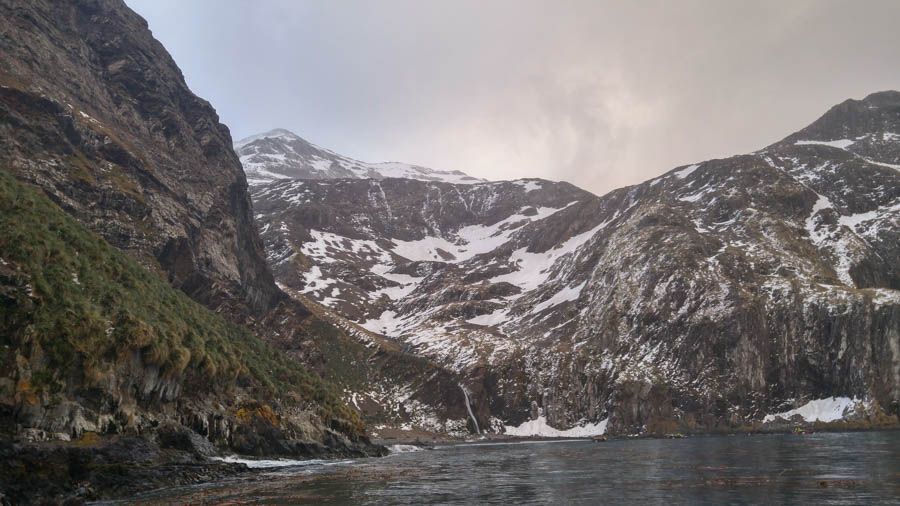
Waterfalls everywhere
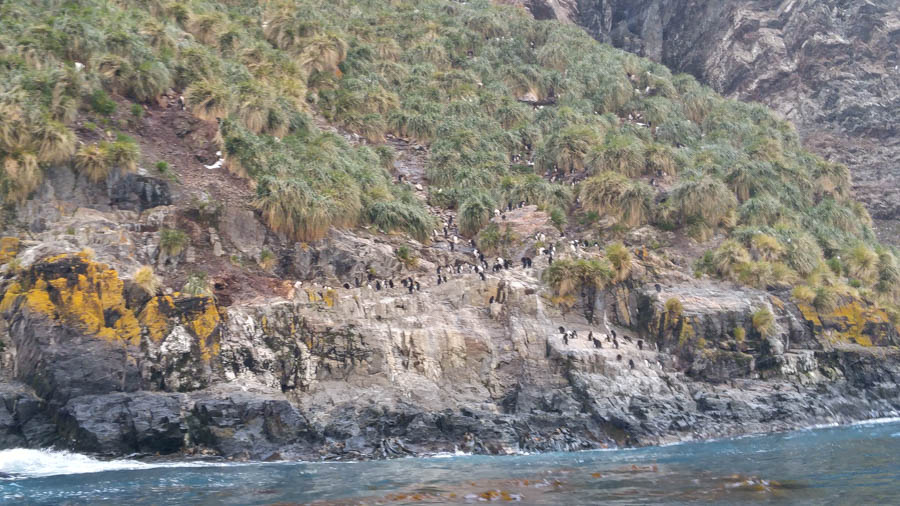
Taking the pathway to the beach
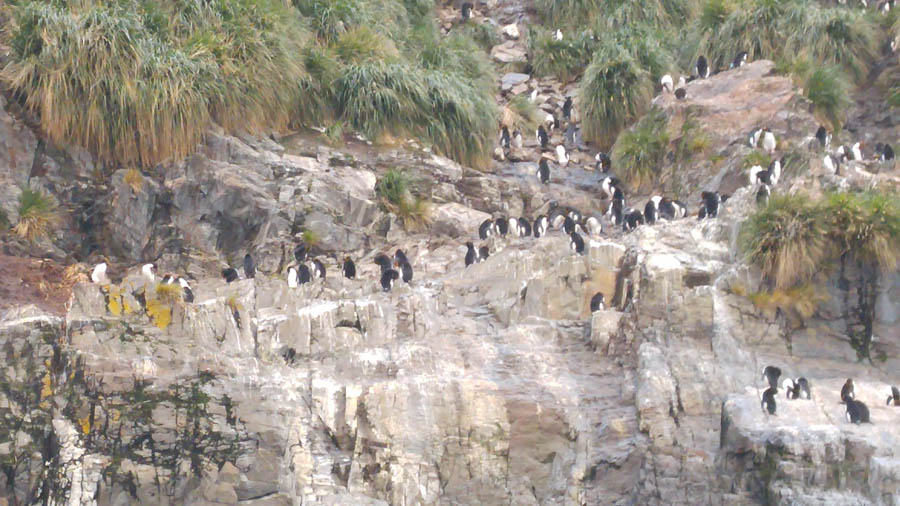
The mountainside was dotted with penguins
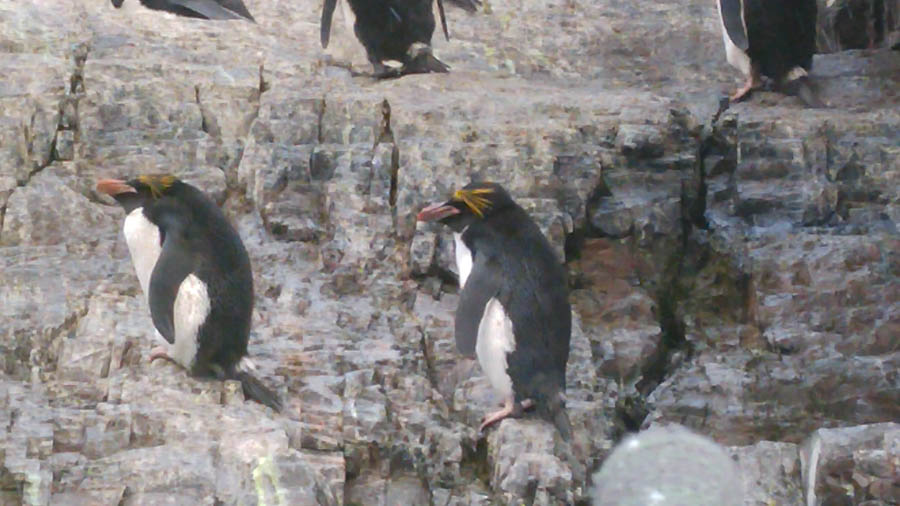
Looks like the professor is holding class

Right on the edge
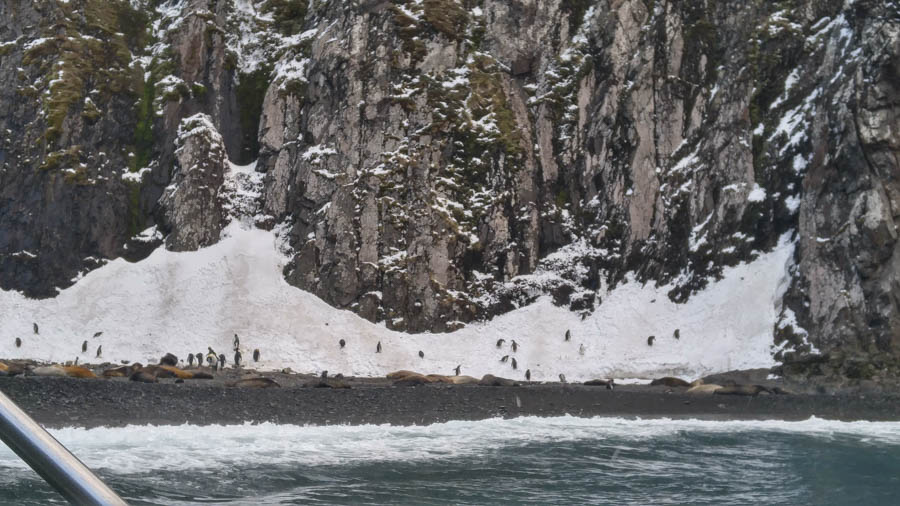
Playing in the snow

Hanging out by the showers

On board and another full day of the sea ahead!

What to do with corks? They have ideas!
